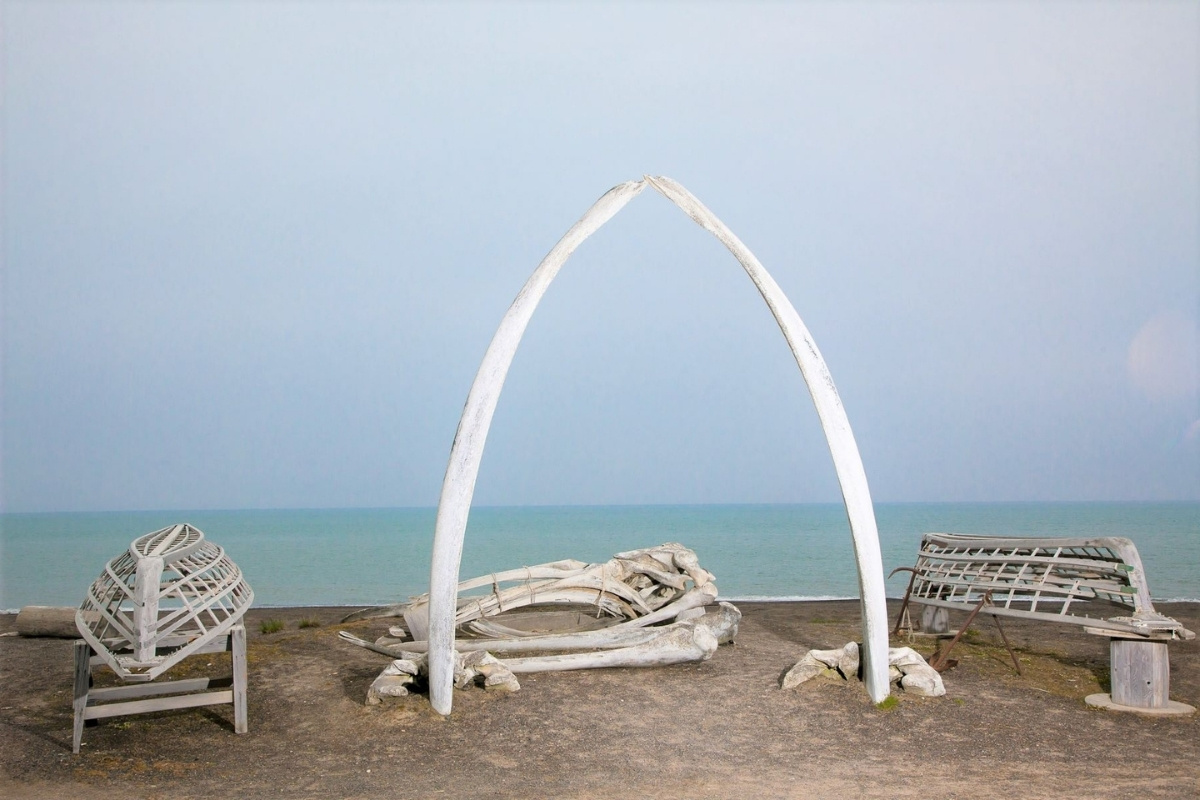Whalebone Beaches Of Alaska’s Arctic Refuge

Have you ever dreamed of visiting a place where nature remains untouched? The whalebone beaches of Alaska's Arctic Refuge offer just that. Located in one of the most remote areas of the United States, these beaches are adorned with massive whalebones, remnants of ancient whaling traditions. The Arctic Refuge is not just about the bones; it's a sanctuary for wildlife like polar bears, caribou, and countless bird species. Imagine walking along a beach where the only footprints are yours and those of the animals that call this place home. This unique destination promises an unforgettable adventure for nature lovers and explorers alike.
Whalebone Beaches: Nature's Masterpiece
Alaska's Arctic Refuge is a land of stark beauty and raw wilderness. Among its many wonders, the whalebone beaches stand out as a testament to nature's artistry. These beaches, adorned with the skeletal remains of whales, offer a unique glimpse into the region's history and ecosystem.
1. Kaktovik: The Gateway to Whalebone Beaches
Kaktovik, a small Inupiat village, serves as the perfect starting point for exploring the whalebone beaches. This remote community offers a blend of cultural heritage and natural splendor.
- Whale Bones on the Shore: The beaches near Kaktovik are dotted with massive whale bones, remnants of traditional subsistence hunting by the Inupiat people.
- Polar Bear Sightings: Kaktovik is also famous for its polar bear population. Visitors often spot these majestic creatures lounging on the beaches or swimming in the icy waters.
- Cultural Insights: Engage with the local Inupiat community to learn about their way of life, traditions, and the significance of whaling in their culture.
2. Barter Island: A Historical Haven
Barter Island, located off the coast of the Arctic Refuge, is another prime location for experiencing whalebone beaches. This island has a rich history and offers stunning natural beauty.
- Historic Trading Post: Barter Island was historically a major trading hub for indigenous peoples. Today, it remains a place where history and nature intertwine.
- Whale Skeletons: The beaches here are littered with the bones of bowhead whales, creating an eerie yet fascinating landscape.
- Wildlife Encounters: Besides whale bones, Barter Island is home to various wildlife, including arctic foxes, seals, and migratory birds.
3. Beaufort Sea Coastline: Untamed Wilderness
The Beaufort Sea coastline stretches along the northern edge of the Arctic Refuge, offering some of the most pristine and untouched whalebone beaches.
- Remote Beauty: This coastline is incredibly remote, accessible only by boat or small aircraft, ensuring an unspoiled natural experience.
- Whale Bone Artifacts: The beaches are scattered with whale bones, some of which have been shaped into tools and artifacts by indigenous peoples.
- Bird Watching: The Beaufort Sea coastline is a haven for bird watchers, with numerous species nesting and feeding in the area.
4. Demarcation Bay: A Hidden Gem
Demarcation Bay, located at the eastern edge of the Arctic Refuge, is a lesser-known but equally captivating destination for whalebone beach enthusiasts.
- Secluded Beaches: The beaches here are more secluded, offering a peaceful and solitary experience amidst the whalebones.
- Marine Life: The bay's waters are rich in marine life, including seals, walruses, and various fish species.
- Scenic Views: The surrounding landscape, with its rolling tundra and distant mountains, provides a breathtaking backdrop to the whalebone-strewn beaches.
5. Camden Bay: A Photographer's Paradise
Camden Bay, situated along the central coast of the Arctic Refuge, is a photographer's dream. The combination of whalebones, wildlife, and stunning scenery makes it a must-visit location.
- Photogenic Landscapes: The juxtaposition of bleached whale bones against the vibrant colors of the tundra creates striking photographic opportunities.
- Wildlife Diversity: Camden Bay is teeming with wildlife, from caribou herds to migratory birds, making it a dynamic and lively environment.
- Midnight Sun: During the summer months, the phenomenon of the midnight sun bathes the landscape in a golden glow, perfect for capturing unforgettable images.
6. Prudhoe Bay: Industrial Meets Natural
Prudhoe Bay, known for its oil fields, also offers access to some intriguing whalebone beaches. This juxtaposition of industrial activity and natural beauty is unique to the Arctic Refuge.
- Oil Field Tours: While primarily an industrial area, guided tours of the oil fields provide insight into the region's economic significance.
- Whale Bones Amidst Industry: Even here, the beaches are adorned with whale bones, a reminder of the area's natural heritage.
- Birdlife: Prudhoe Bay is a hotspot for birdwatching, with numerous species thriving in the wetlands surrounding the industrial complex.
The Magic of Alaska's Arctic Refuge
Alaska's Arctic Refuge offers a unique experience. The whalebone beaches are unlike any other place. They tell stories of the past, showcasing the rich history of the Inupiat people. The wildlife here is abundant, from polar bears to migratory birds. Visiting this remote area gives a sense of peace and connection to nature.
Traveling to the Arctic Refuge isn't just about seeing a new place. It's about understanding the delicate balance of this ecosystem. Respecting the land and its history is crucial. Whether you're an adventurer or a nature lover, this destination will leave a lasting impression.
Plan your trip carefully. Respect the environment and the local culture. The Arctic Refuge is a treasure worth preserving for future generations. Enjoy the beauty and serenity of this incredible place.

